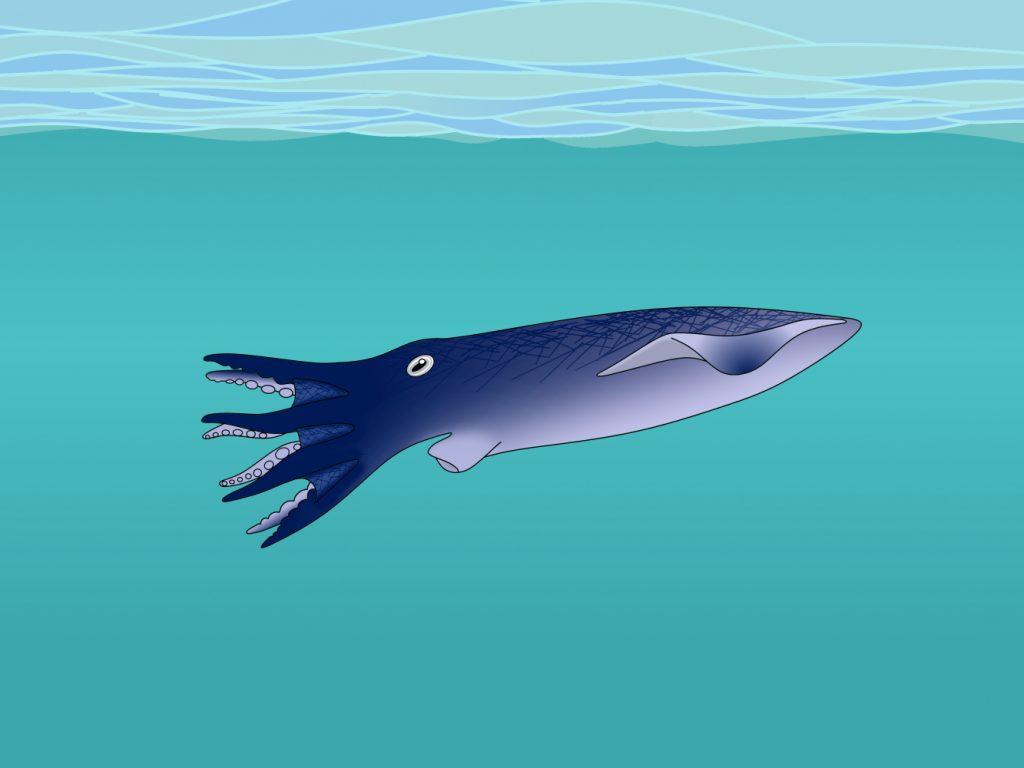
A new look for Enchoteuthis
You may have seen pictures of a gigantic squid attacking mosasaurs. That’s what ancient cephalopods like Tusoteuthis and Enchoteuthis were once thought to be. Newer evidence shows, though, that these reconstructions are wrong, and that these animals were really close relatives of octopuses.
Let’s explore Enchoteuthis’s taxonomy. Coleoids are the group of cephalopods with internal shells, or no shells at all. This Octobranchia (or vampyropoda) and Decabranchia. Octobranchians have eight arms, and include Vampyromorpha and Octopoda. There are two groups in Octopoda, Enchoteuthidae and Octopoda, this time true octopuses. Today, we will focus on Enchoteuthidae, and as you can see, Enchoteuthis is much more closely related to octopuses than to squid, which are part of Decabranchia. All Enchoteuthids had a large, hard, spoon-shaped structure made of chitin, called the gladius, and this supported the animal’s body, called the mantle. On each side, there was a muscular, triangular fin, and this helped the cephalopod swim. On the underside of the head, there was a muscular tube, called the siphon. This sent out a strong jet of water, propelling the animal backward, called jet propulsion. On each of the eight arms, there was only one row of suckers, contrary to the usual two of most coleoids. These were used to seize prey before the sharp beak and rasping radula tore it apart.
|Cephalopods
Cephalopods are mollusks, like snails, slugs, and clams. They have eight to ten arms, complex eyes, and large brains. All cephalopods swim by squirting water out from their bodies.
At up to 8.3 ft (2.52m) long, this mysterious cephalopod would have been quite speedy, allowing another defense next to the usual inking instinct. Both of these were needed in the world of Tylosaurus, Cretoxyrhina, and Archelon, all quite willing to catch and eat an especially slow Enchoteuthis.
Sources
Reconstructing fossil cephalopods: <i>Enchoteuthis</i> (<i>“Tusoteuthis”</i> )
https://paleobiodb.org/classic/checkTaxonInfo?taxon_no=15945
